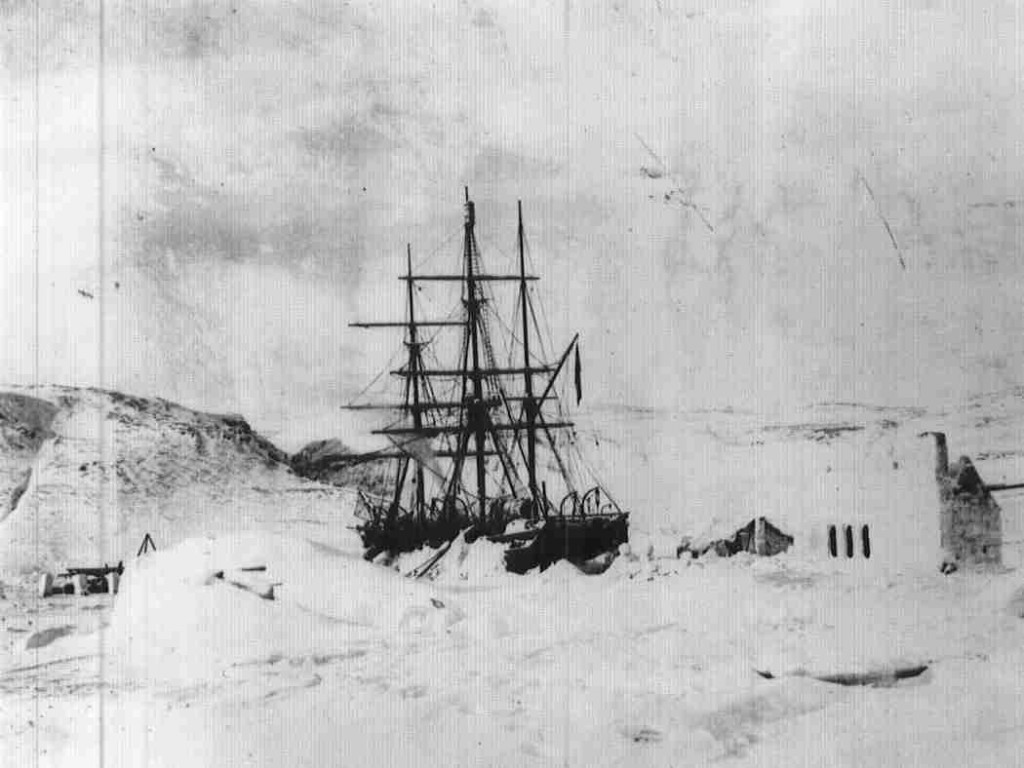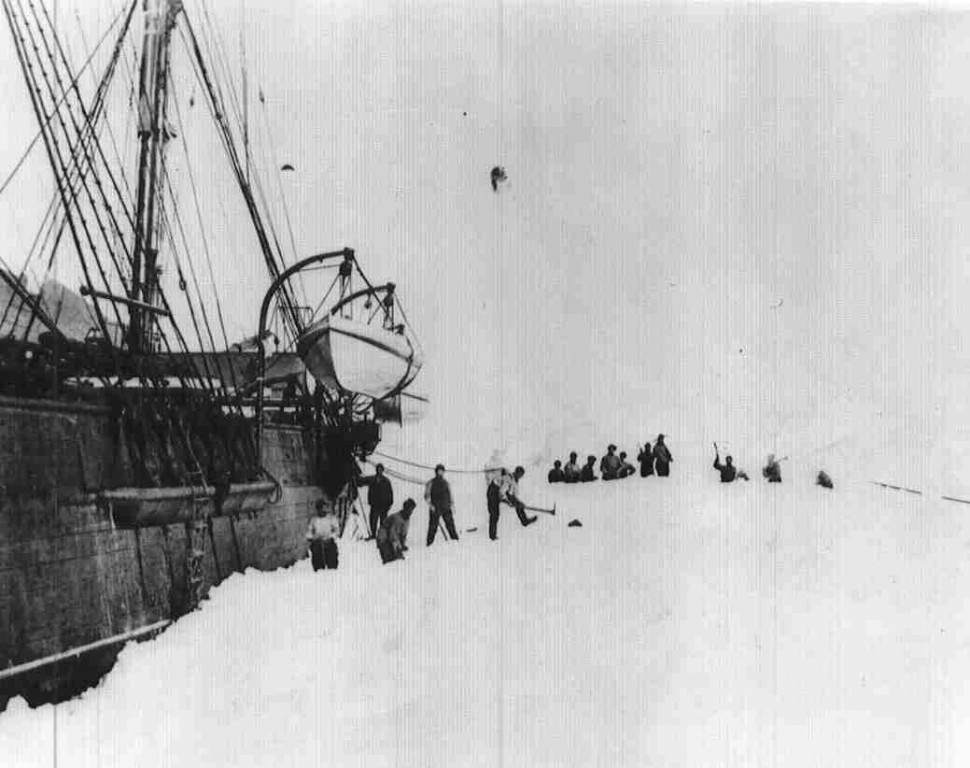British Arctic Expedition, 1875-76
 HMS Discovery frozen in sea ice for the winter.
HMS Discovery frozen in sea ice for the winter.
Setting Sail
On May 29, 1875, the British Arctic Expedition departed Portsmouth, England in two ships, HMS Alert and HMS Discovery, on a voyage to the Canadian High Arctic.
Can you imagine? Leaving your home, your family, your neighbourhood for such a long journey? Everything would be different for the expedition team members. For one thing, expedition members would winter aboard their ships, which were cold and damp due to condensation and lack of ventilation.
Objectives
- Advance scientific knowledge of the Arctic
- Carry out sledging excursions as far north as possible
Sounds simple enough. Learn about the Arctic and travel north… but the Arctic is a land that doesn’t give many second chances.
Preparing for the Journey
The expedition party relied primarily on European technology.
- They did make some use of Inuit technology. In preparation for the journey, they:
- Purchased seal skin boots made by West Greenland Inuit women
- Bought 55 sled dogs
- Hired two Greenlandic guides, hunters, and dog-drivers
What would you do? If you were charged with learning as much as you could about a place completely unfamiliar to you – and planned to travel as far north as possible - where would you start? Would you try and learn from the Inughuit people who’ve lived there for generations? Or, would you use technology brought from the south and be on your way?
Landing in the Arctic
By late August of 1875, both ships had reached Lady Franklin Bay on northeastern Ellesmere Island. While HMS Discovery overwintered at a sheltered harbour that now bears its name, HMS Alert traveled further north to Cape Sheridan. Once there, its captain and expedition leader, George Strong Nares, established his winter quarters.
Exploring the North
 Crew members of HMS Discovery securing their ship for a long arctic winter.
Crew members of HMS Discovery securing their ship for a long arctic winter.
- The focus of the expedition’s activities was exploring northern Ellesmere Island and its adjacent landmasses.
- In March 1876, Nares dispatched two parties with man-hauled sledges.
- One would head west exploring the northern coast. The other set off across the pack ice of the Arctic Ocean hoping to attain a farthest north record, or perhaps even making it as far as the North Pole itself.
- While one dog sled was used to move messages and sick/injured men to and from the ships, man-hauling sledges was a point of pride to the British Navy.
- Consequently, the men struggled in their attempts to haul the heavily-laden sledges over rough and hummocky ice and deep drifting snow.
- In many cases, the sledgers were forced to use pick axes and shovels to clear a path through these formidable obstacles.
- The onset of scurvy made matters worse. The incapacitated and infirm needed to be carried on the sledges, which only served to increase the weights being hauled.
- Upon realizing their predicament, the northern party turned back, but not before reaching a new farthest north record at 83° 20’ 26” N, a distance that was approximately 640 km from the North Pole.
By the summer of 1876, scurvy had taken hold of the ships crews, forcing Nares to depart the Arctic a year earlier than anticipated.
- For this action, Nares faced an inquiry from the British Parliament. He was accused of not providing enough lime juice to his men. An absurd accusation to modern ears! But, at the time, lemon and lime juice were both widely used by the British Navy as a means of combating scurvy. Unfortunately, poor preservation and storage practices often diminished their effectiveness.
A demoralizing end to a difficult expedition? Expecting adventure, experiencing hardship, advancing science, and facing Parliamentary Inquiry: these were all facts of life for the British Arctic Expedition. Despite its struggles, the expedition party did achieve a Farthest North record, and it did add to the growing body of knowledge about the Arctic.

